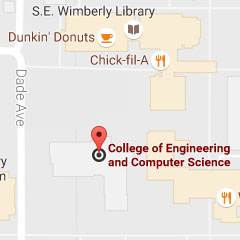Environmental
Overview and Objective
A common issue at chemical companies is the color of the wastewater they discharge to the local wastewater treatment plant. Community members that live near pipe outlets may have concerns about the environmental impact of the dyed wastewater. This year’s environmental competition will focus on removing dye from synthesized wastewater. The objective of this competition will be to remove a specified concentration of a specific dye from synthesized wastewater.
Eligibility
Each university may have one team with up to four students, one of whom may be a graduate student, however, on the competition day only two (2) members, both of which must be undergraduate students, will be allowed to conduct experiments. Each team will have a captain who is responsible for submitting the treatment system during registration. All students must be members of the ASCE student chapter.
Submittals
A materials and equipment list must be submitted electronically to the host school, by no later than Friday, February 24, 2017 at 11:59:59 p.m. EST to 2017asce@fau.edu. The chemicals needed to perform the desired reactions must be mailed to the host school with a postmark on the packaging no later than Monday, March 6, 2017 to:
Florida Atlantic UniversityDepartment of Civil, Environmental, and Geomatics Engineering
Attn: Dr. Peng Yi
777 Glades Road, EW 224
Boca Raton, FL 33431
The submitted materials will be opened and verified, by the judges, to ensure the items on the material list arrived. Then the submitted packages will be sealed until the day of the competition to be opened by the individual schools. After inspection of package contents each school will be notified. The equipment found in a standard environmental chemistry laboratory will be provided for the students in this experiment. A pH meter and UV-Vis spectrophotometer will be made available. Any other equipment should be brought with the school to the competition.
Materials and Limitations
The materials for this competition must NOT be hazardous, by MSDS standards, to the environment or to humans. The materials must be legal to ship via FedEx, UPS, or USPS. While there is no cost limit for the materials in this competition, it should be noted, the material cost is also an important factor in determining the winner.
The equipment provided for this competition will be equivalent to what would be found in a standard environmental chemistry laboratory.
Technical Paper
The technical paper, due at time of judging shall be 750-1000 words in length and consist of:
- Introduction
- Name of University
- Names of team members
- Captain’s name and cell phone number
- Material Documentation
- Materials used and quantities
- Purchase information of all materials, (include photocopies of the receipts)
- Methodology
- Explanation of treatment methods
- Discussion of alternative methods considered
- Experimental procedures used to remove dyes from water
- Discussion of any problems encountered and overcome
- Results
- The average results of duplicate measurements of absorbance of water before and after treatment.
Logistics
On the day of the competition a specific concentration of methylene blue (C16H18CIS3N·3H2O) will be announced to the competing students. The concentration will be between 2.5 mg/L and 5.0 mg/L. The range of concentrations is to ensure students have an understanding of the reactions used to do the dye extractions. Students should account for the maximum concentration when sending in chemicals and chemical lists. The volume of the dyed water to be treated will be between 500 mL to 1000 mL. The synthesized wastewater will be made just by adding methylene blue into deionized water.
Each team will be given a specific amount of time to perform their experiments.
Testing Procedure
Each school will be given thirty (30) minutes to prepare their treatment process. The treatment process will be given a maximum of one (1) hour to complete. After one hour, samples will be collected and tested for absorbance in a spectrophotometer.
Judging
The judging panel will consist of two judges. The judges will collect each school’s sample and read the absorbance, with respect to deionized water, in a spectrophotometer. The school, whose sample has the smallest percent error from the standard, deionized water, with the lowest cost will be the winner.
Disqualifications
Any toxic materials will result in disqualification.
Any dilutions will result in disqualification.
Questions
Send questions to 2017asce@fau.edu. Answers will be posted on the Q&A page.


